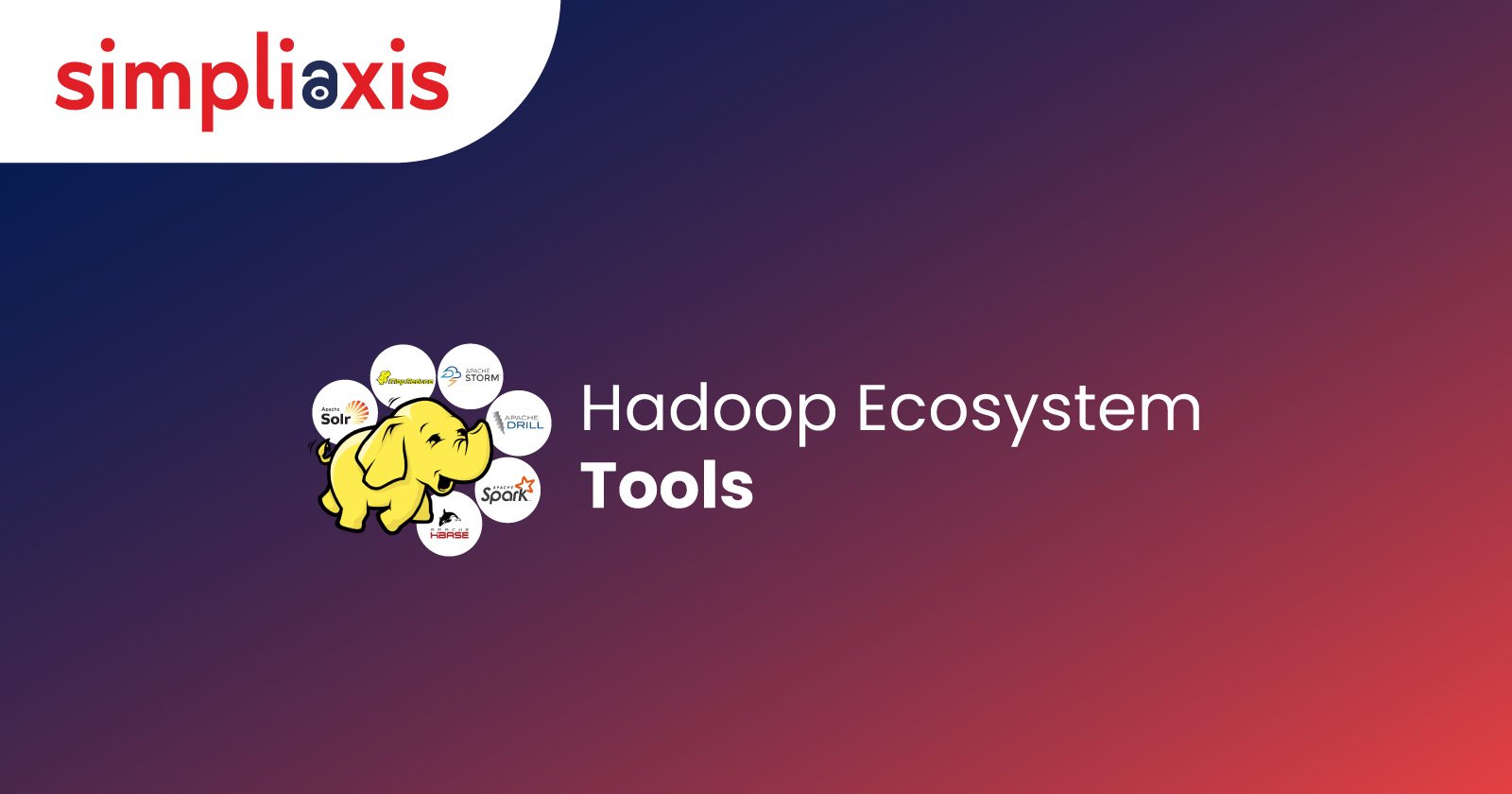The Apache Hadoop Commons and the Apache Software Foundation's instruments and peripherals are included in the Hadoop ecosystem, which is more strictly defined as the various software elements. To handle and analyse enormous volumes of data, Hadoop employs a Java-based architecture. The Apache Software Foundation licenses the core Hadoop framework and several add-ons as expansive programs. YARN is a tool controller for the Hadoop Distributed File System (HDFS) and MapReduce, two fundamental elements of the Hadoop ecosystem tools.
MapReduce
Google's networked computing method, Map/Reduce, was first introduced in 2004. The HDFS store's real information is handled through a Java-based framework. Formal and informal information may be processed at this level since it's built to manage massive volumes of information. MapReduce is essentially about breaking down a large information-handling assignment into smaller ones. It is premised that work should be broken down into smaller chunks and processed individually. Big information may be processed in tandem using MapReduce.
The "Map" stage defines everything about the logic function. Handling vast volumes of organized and unorganized information is the primary goal of such a tier. Assignments get broken down into smaller, more manageable pieces at the "Reduce" step. MapReduce is a platform in Hadoop's ecosystem tools that makes it easy to build programs to multiple nodes and analyze enormous amounts of information in tandem before actually lowering these to get the output. In its simplest form, MapReduce distributes a computing request over several units and aggregates the outputs into a unifying figure for the outcome.
HDFS
HDFS seeks to facilitate the retention of big datasets and achieves it by spreading its content over a group of data servers. NameNode operates in a network linked by one or multiple data blocks and enables the administration of a conventional tiered folder and domain. A name node successfully manages the connection with the dispersed content nodes. The generation of a folder in HDFS seems to be a large content, while it breaks "chunks" of a folder into parts maintained on different data nodes.
The name node holds information regarding every item and also records modifications to document data. That information comprises an identification of the controlled folders, attributes of the documents, and network records, and also the translation of blocks to folders somewhere at data nodes. The data node does not maintain any data regarding the conceptual HDFS folder; instead, it considers every data block as just a distinct folder and communicates the important data well with the name node.
YARN
YARN (Yet Another Resource Negotiator) is the Task Monitor latency that existed in Hadoop 1.0 and has been eliminated in Hadoop 2.0 thanks to this feature. At its inception, YARN was referred to as a "Redesigned Resource Manager," but it has since developed to become recognized as a vast distributed operating system utilized for handling Big Data.
Thanks to YARN, data stored in HDFS (Hadoop Distributed File System) may now be processed by a variety of data analysis algorithms, such as chart, dynamic, torrent, and batch processes. The system may flexibly assign different assets and plan the execution of the program via its many elements. Vast information analysis requires careful capacity management so that each program may benefit from the tools present.
Data Access Components of the Hadoop Ecosystem
Hive
A data warehouse program called Apache Hive allows you to view, edit, and handle large information kept in cloud systems using SQL. The material in the collection may be given form by projecting it onto that. Using a control tool and a JDBC driver, individuals may link to Hive.
Hive is a free source platform for analyzing and exploring huge amounts of Hadoop information. In Hive, operations are supported by ACID. Hive enables ACID operations at the row level, with the ability to add, remove, and modify rows. In the eyes of many, Hive isn't a dataset at all. The capabilities of Hive are constrained by the limitations imposed by the architectures of Hadoop and HDFS.
Sqoop
Using Apache Sqoop, enormous volumes of material may be transferred from Hadoop to conventional systems and back again. Sqoop can also import content across Oracle, MySQL, and similar systems.
Blog and Clob are two of the most frequent big entities in Sqoop. If the item is smaller than 16MB, it will be saved alongside the remainder of the content. If there are large items, they are briefly saved inside the club subfolder. After that, the material is manifested in storage and processed. It is saved in outer storage if the lob limitation is reduced to 0.
Sqoop requires a bridge to link all various related systems. Nearly all system manufacturers provide a JDBC adapter unique to that system; Sqoop requires the site's JDBC adapter to enable communication.
Data Storage Component of Hadoop Ecosystem – HBase
Apache HBase is a shared large database repository accessible and NoSQL. It allows actual exposure to petabytes of content in a stochastic, highly coherent manner. HBase excels in dealing with huge, fragmented collections.
HBase works at the top of the Hadoop Distributed File System (HDFS) or Amazon S3 utilizing the Amazon Elastic MapReduce (EMR) file system, or EMRFS, and interacts easily with Apache Hadoop and the Hadoop ecosystem. HBase interacts with Apache Phoenix to provide SQL-like searches over HBase records and provides a straightforward source and outlet to the Apache MapReduce platform for Hadoop.
HBase is a non-relational column-oriented system. Information is kept in distinct sections and is sorted using a distinct row reference. Specific rows and columns may be retrieved quickly, and single sections within a list can be rapidly scanned.
Monitoring, Management, and Orchestration Components of the Hadoop Ecosystem
Zookeeper
Application library Apache Zookeeper's primary goal is to coordinate dispersed programs. Program programmers do not need to begin from scratch when implementing basic services such as clustering and cluster synchronization. Prioritization and leader elections are supported out of the box.
The "ZNode" data model of Apache Zookeeper is a storage framework data model. In the same way, file systems have directories, ZNodes have directories and may be linked to other data. Using a slash, the ZNode may be referenced using the following command separated by a slash. The ZNode hierarchy is stored on every system in the cluster, allowing for lightning-fast reaction times and infinite scalability. Every 'write' query to the disc is recorded in a log file on every system. Transactions are crucial because they must be replicated across all servers before they can be sent to a user. An overall folder is not recommended since it looks to be built on top of a data structure. For storing tiny amounts of data, it must be utilized in collaboration with networked applications to be stable, quick to scale, and readily accessible.
Oozie
Pig and Hive, two popular tools for creating massive information programs, have adopted Apache Hadoop as the free software de facto mainstream for Big Data analytics and storage.
Even though Pig, Hive, and many other programs have simplified the process of developing Hadoop jobs, it is often the case that a simple Hadoop job is rarely enough to produce the required output. Hadoop tasks must be linked together, and data must be exchanged, making this process extremely time-consuming.
The Oozie Architecture includes an Internet Host and a data system, which store all of the tasks. Apache Tomcat, a free-access version of Java Servlet Technology, is the standard server. A standalone web app, the Oozie host does not save any data about the client or task in storage. When Oozie processes a demand, it consults the server containing all of this metadata to get a current picture of the operation.
Conclusion:
Understanding just a few technologies (Hadoop elements) is useless for creating a response in a Hadoop ecosystem. To construct a system, you must understand a variety of Hadoop elements. Based on user scenarios, we may pick a range of tools in the Hadoop ecosystem and construct a customized strategy for a company. Each component, from MapReduce and HDFS to Hive, Sqoop, and HBase, plays a vital role in handling and analyzing vast amounts of data. Organizations can build tailored strategies that meet their specific needs and scenarios by integrating these tools effectively. The power of the Hadoop ecosystem lies in its flexibility and scalability, enabling businesses to harness big data's full potential. Simpliaxis offers Big Data Analytics Training to further empower professionals in leveraging the Hadoop ecosystem for advanced data analytics













 +1-361-998-9988
+1-361-998-9988


